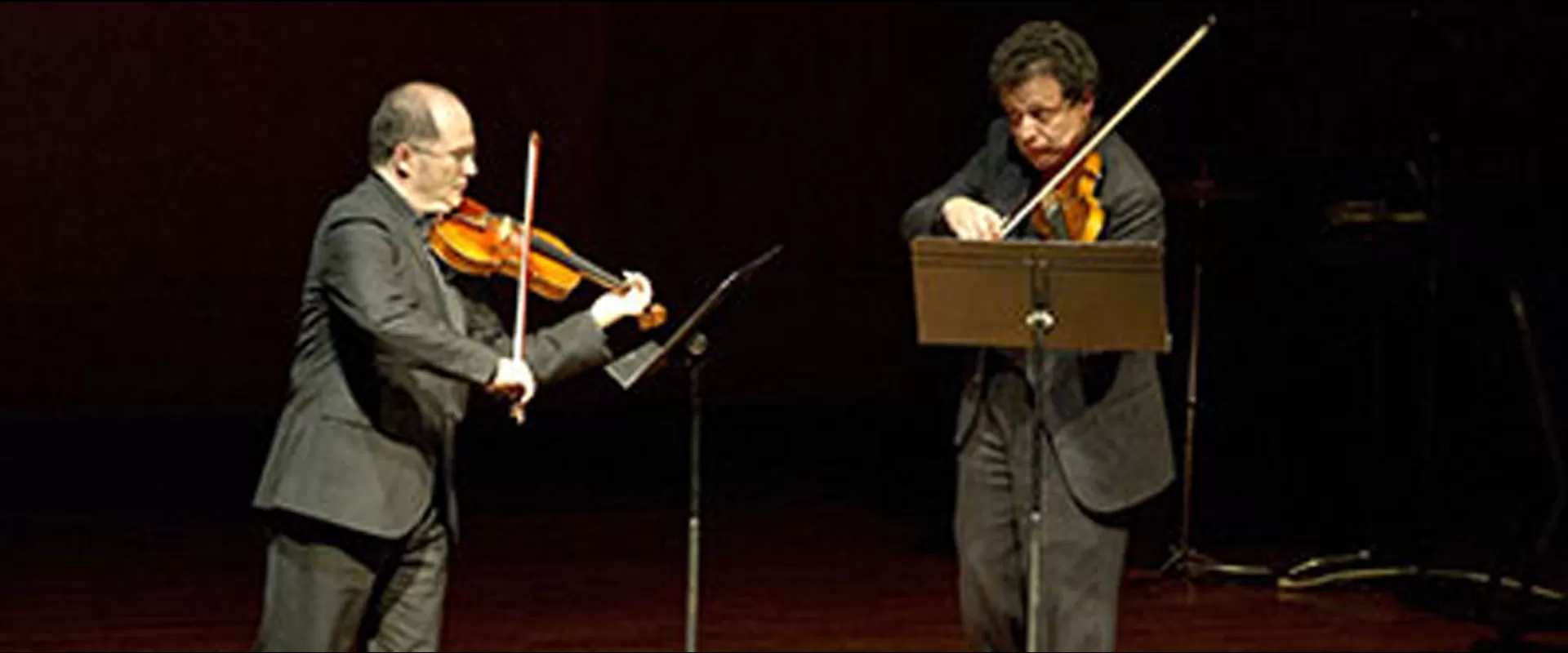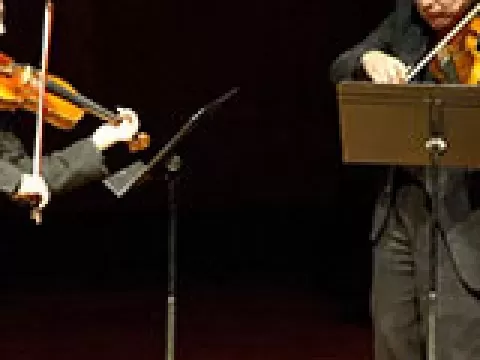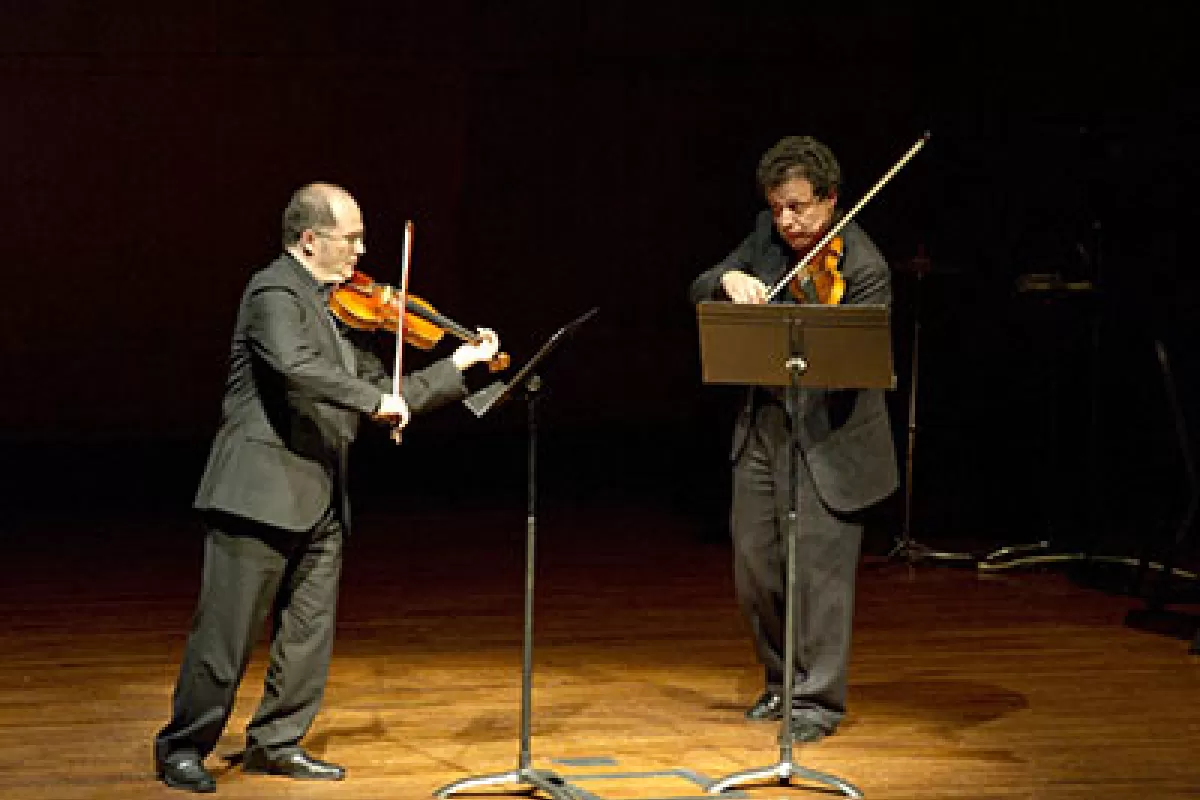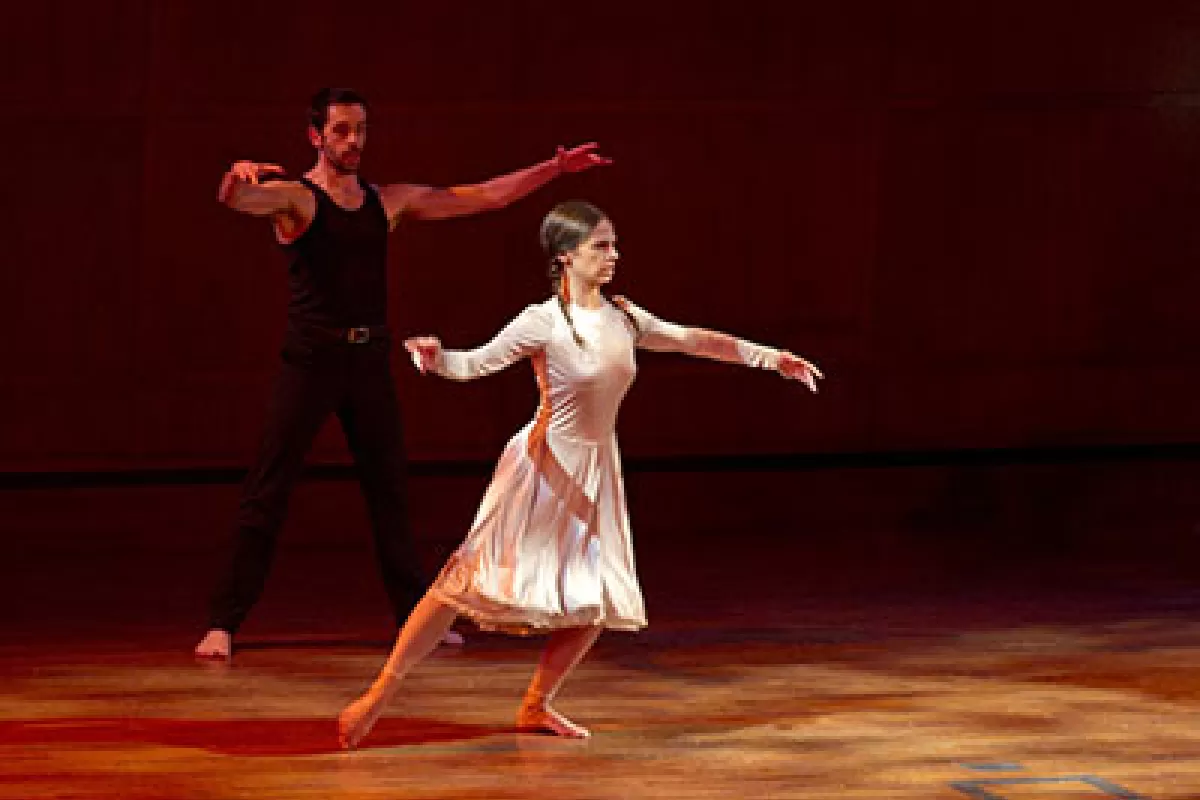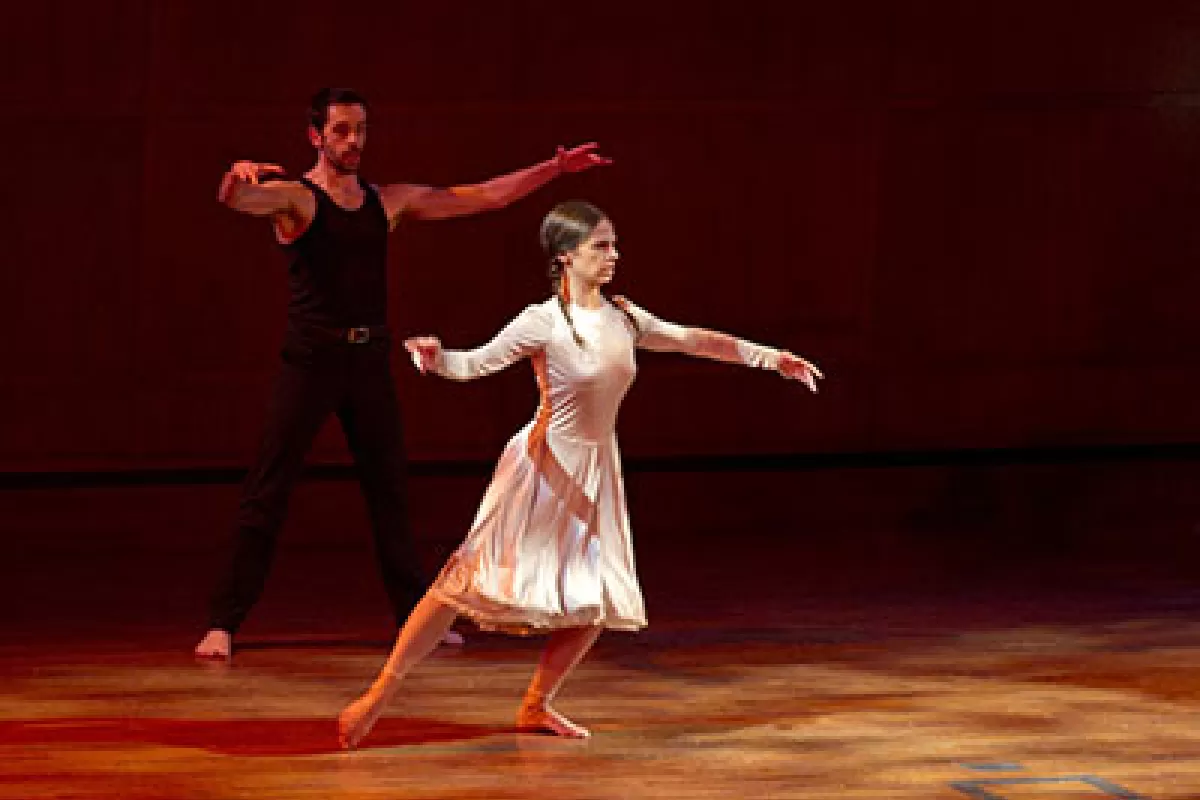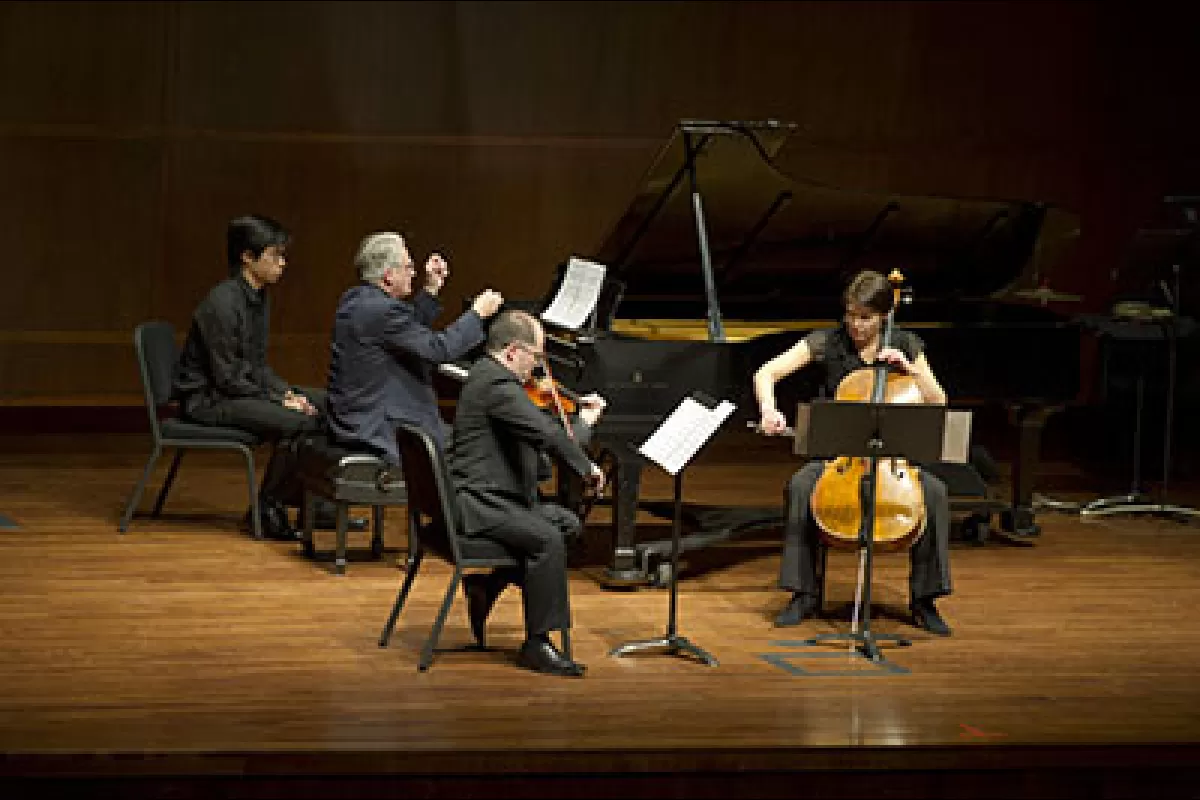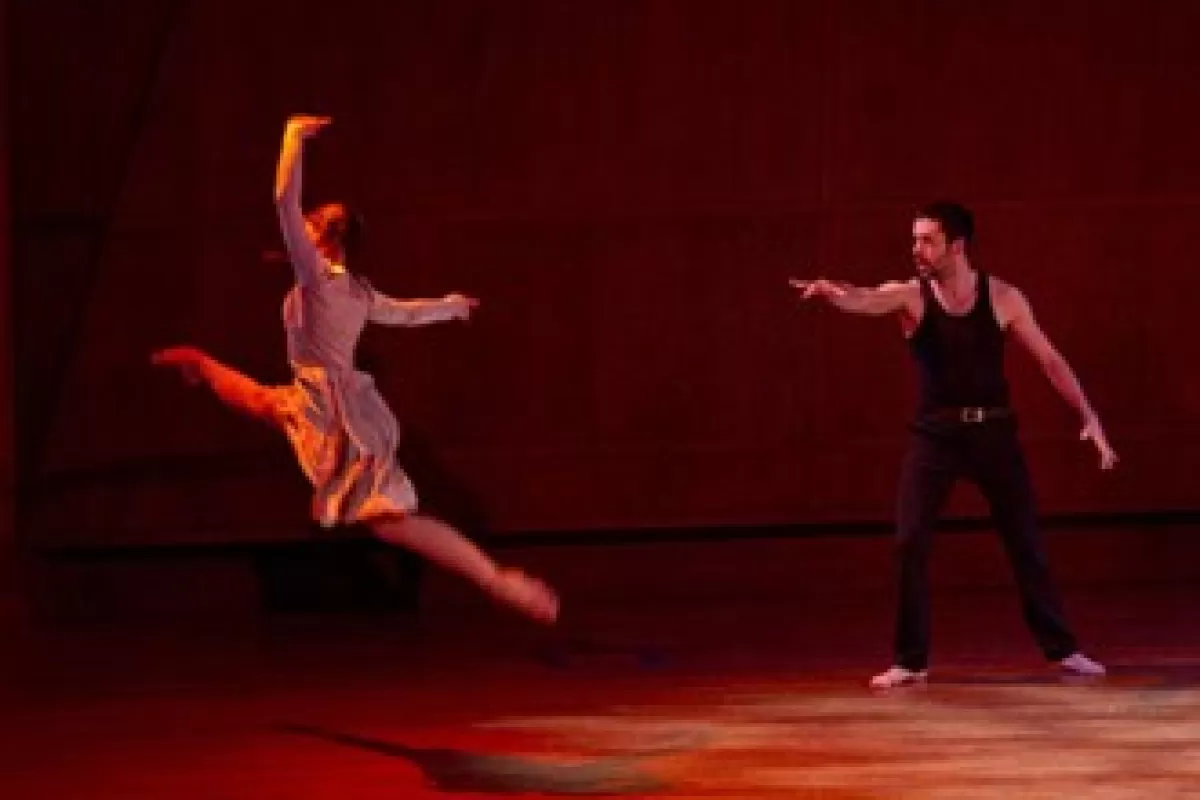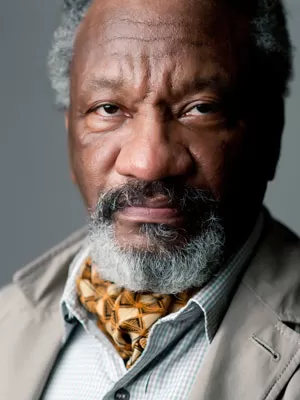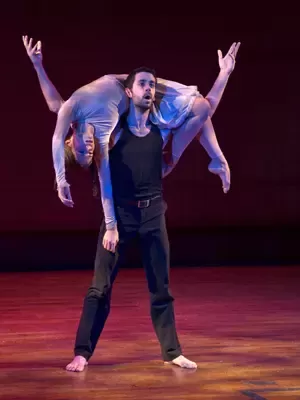Nov 8, 2010 - 12:00 pm
Our fall concert explored the complexity of Russian Jewish identity in the first half of the 20th century. Joel Engel composed The Dybbuk Suite as incidental music for S. Ansky’s iconic Yiddish play. The play is a dramatically rich tale of a young woman who, on her wedding day, is possessed by the soul of the man who died of unrequited love for her. We revisited this story with Donald Byrd’s brilliant choreography for dancers from Spectrum Dance Theater. We also heard acclaimed pianist Craig Sheppard in a piano trio by Mikhail Gnessin, dedicated “to the memory of our lost children”—written in 1943 as news of the Holocaust reached the Soviet Union. Dmitri Shostakovich created his intimately evocative song cycle From Jewish Folk Poetry in 1948 but it was premiered only in 1955, due largely to Stalin’s disfavor for Shostakovich and to Soviet anti-Semitism in general.
ABOUT THE MUSIC
For a brief period early in the 20th century, Czarist Russia was the center for Jewish art music composed in a style that became known as the St. Petersburg School. Composers such as Aleksander Krein, Mikhail Gnessin, and Joel Engel applied techniques of Western classical music to cantorial and klezmer traditions to create a national Jewish style in art music. They sought their source material in the secular tunes and religious melodies of the Pale of Settlement.
The St. Petersburg School drew on materials rooted culturally and sociologically in the history of Jewish persecution over the centuries. Beginning in the 14th century, an exodus of Jews from Western and Central Europe gradually migrated eastward, fleeing various degrees of expulsion, persecution, inquisition and hardship. Jews were welcomed, if only halfheartedly, by Polish noblemen and Russian czars. From 1791 until 1917, Jews living in Eastern Europe were confined by the czars of Russia to an area known as the Pale (meaning “borders of settlement”). This group of 25 provinces, stretching from the Black to the Baltic Sea, corresponds today to parts of Poland, Romania, Ukraine, Belarus, and Lithuania.
At the beginning of the 19th century, about one million Jews were residents of the Pale; by the beginning of the 20th century the population had increased to over five million. 95 percent of Russia’s Jews were confined to this area, separated from other groups of the Russian population. Most Jews were expelled from Moscow and St. Petersburg, and forced into the Pale. Later they were also expelled from rural areas within the Pale and forced to live only in shtetls. Within areas difficult to traverse, and isolated in villages, Jewish residents preserved both their religious and cultural traditions, including their musical folklore. The literary tales of the great Yiddish writers like I. L. Peretz, S. Ansky, and Sholem Aleichem open a window on this milieu, including its colorful klezmer musicians.
The origin of the St. Petersburg school of Jewish art music has been traced to a meeting in 1897 between composer Joel Engel (1868-1927) and the Russian music critic Vladimir Stasov. The critic challenged Engel and his colleagues to seek musical inspiration in their Jewish heritage. Nikolai Rimsky-Korsakov, whose own work took inspiration from Russian folk tradition, also encouraged his Jewish students at the St. Petersburg Conservatory to collect and study Jewish folk melodies. Several other non-Jewish Russian composers—for example, Balakirev, Glazunov, Glinka, and Mussorgsky—also became aware of the distinctive character of Jewish secular and sacred music.
A Russian Jewish musical style was institutionalized in 1908 with the founding of the Society for Jewish Folk Music in St. Petersburg. In 1912, branches of the Society opened in Moscow and Kharkov. The Society organized concerts of Jewish music in numerous towns, and by 1913 had over 1,000 members and branches in seven cities, providing intellectual, artistic and practical support for Russian Jewish music. The activities of the Society’s main branch in St. Petersburg stopped in 1918, in the wake of the Russian Revolution. Other branches continued their activities for a few more years; the Moscow branch changed its name to the Society for Jewish Music in 1923, and continued to function until 1928.
Hebrew Sketches, No. 2, Op. 13 (1910)
Aleksander Krein (b. Nizhni Novgorod, Russia, 1883 – d. Staraya Russa, Russia, 1951)
Aleksander Krein played a major role in the emerging school of Jewish national music as a composer and active member of the Society for Jewish Folk Music (Moscow Branch 1913-19) and the Society for Jewish Music (1923-29).
In 1917, he became director of the music department of a new ministry of arts and education, and throughout the 1920s, like his contemporary Joel Engel, Krein wrote music for the stage. Just as Engel’s name is associated with The Dybbuk’s triumph at the Hebrew-language Habima theater, Krein is remembered for the success of The Night in the Old Market at the Moscow State Jewish Theater (GOSET). When the political tide turned against Jewish music, Krein could no longer perform his overtly Jewish cantata Kaddish (1921) or the Hebrew Sketches (1910) we hear tonight. This work represents one of his first efforts at combining an impressionistic harmonic language with Jewish prayer chant and folk music.
Piano Trio, Op. 63 (1943)
Mikhail Gnessin (b. Rostov-on-Don, Russia, 1883 – d. Moscow, Russia, 1957)
Dedicated to the Memory of Our Lost Children
Mikhail Gnessin was a leading Jewish musical voice in the first wave of Soviet modernist composers. In 1908, he co-founded the Society for Jewish Folk Music in St. Petersburg. Later he traveled through Western Europe learning folk tunes, and to Palestine researching ancient Hebrew music. After 1914 Gnessin devoted the major part of his work to Jewish subjects, and when this became dangerous during the Stalin regime he focused on the different ethnic cultures within the USSR. He became Professor of Composition in the Conservatories of both Moscow and St. Petersburg, and also taught at the Gnessin Academy. The academy, founded by his sisters in 1895, remains one of Russia’s most prominent institutions of musical education.
Gnessin composed the piano trio in 1943, as the first news of the Holocaust reached the Soviet Union. The work’s dedication “to the memory of our lost children” has been interpreted as a reference, though somewhat oblique, to Jewish suffering.
The Dybbuk Suite (1922)
Joel Engel (b. Berdyansk, Crimea, 1868 – d. Tel Aviv, 1927)
WORLD PREMIERE OF MOR DANCE COMMISSION (2010)
Donald Byrd, Spectrum Dance Theater
Joel Engel led the Moscow chapter of the Society for Jewish Folk Music for over a decade until 1919, publishing folk song collections and some 150 compositions by himself and other Russian-Jewish composers. In 1912, he joined the folklorist and Yiddish writer S. Ansky on an ethnographic expedition to collect Jewish music and other folk culture in the shtetls of the Pale of Settlement. The results of this expedition included hundreds of musical transcriptions and early field recordings that became the inspiration and source material for Jewish composers to the present day.
There they learned a tale about a “dybbuk,” the soul of a dead person possessing a living one. Captivated, Ansky went on to write the play The Dybbuk, and Engel wrote the incidental music, including traditional songs he had heard in the shtetls such as the Chassidic song Mipnei Ma (“Why?”) about the ascent and descent of the human soul. The Dybbuk had its premiere in 1922 in Moscow’s Habima Theater, and went on to become the most famous Jewish play in the world. Engel’s music, in its day performed across continents, has largely been lost to succeeding generations.
From Jewish Folk Poetry, Op. 79 (1948)
Dmitri Shostakovich (b. St. Petersburg, Russia, 1906 – d. Moscow, 1975)
Dmitri Shostakovich was not Jewish, but was raised by politically liberal parents who took care that no seeds of anti-Semitism were planted in his upbringing. Born in 1906, he would grow up during the flowering of the Society of Jewish Folk Music. In his memoirs he wrote: “Jewish folk music has made a most powerful impression on me. I never tire of delighting in it; it is multifaceted—it can appear to be happy while it is tragic. It’s almost always laughter through tears…. This quality of Jewish folk music is close to my ideas of what music should be….”
After Stalin had launched his terrible campaign against Jewish intellectuals and artists, Shostakovich incorporated Jewish themes into his music at considerable risk to his standing and even his personal safety. Besides the cycle From Jewish Folk Poetry, his Piano Trio No. 2 (banned after its premiere performance), his Symphony No. 13 (inspired by Yevtushenko’s poem Babi Yar about the Nazi massacre of Kiev’s Jews), and his Second Cello Concerto, are full of Jewish folk melodies.
From Jewish Folk Poetry is one of Shostakovich’s most beautiful and intimately evocative song cycles. He was inspired by the Russian translation of a collection of Jewish Folk Songs compiled by Yekhezkel Dobrushin. The first eight songs, completed in August 1948 and performed at a private birthday celebration at the composer’s home that September, have been described as “tragic,” reflecting the pain and suffering of the pre-Revolutionary past. They employ Jewish folk melodies, and contain elements of folklore and folk expressions. Political controls tightened soon after, and this might help explain why the work’s final three songs emphasize the good Soviet life and employ a musical language closer to official workers’ song than to art song. From Jewish Folk Poetry received it premiere in 1955, postponed largely because of Stalin’s disfavor for Shostakovich and Soviet anti-Semitism in general.
About Music notes by Mina Miller. Copyright 2010 Music of Remembrance
